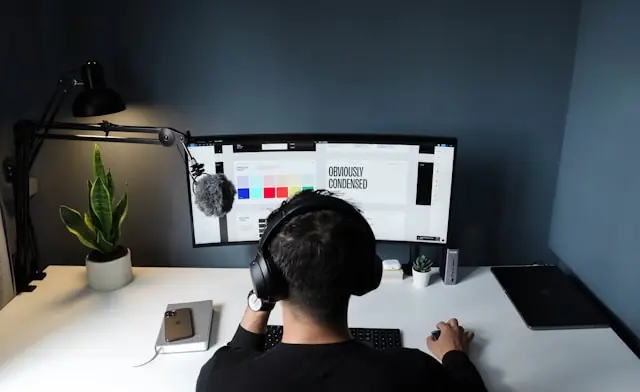In the digital era, effective communication has become more essential than ever. Whether for business meetings, academic lectures, marketing pitches, or personal projects, presentations remain one of the most powerful tools to convey ideas. However, crafting a compelling presentation can be time-consuming and creatively challenging. This is where AI presentation makers enter the scene, reshaping the landscape of visual communication by offering smarter, faster, and more intuitive ways to design presentations.
Artificial intelligence has gradually integrated into various creative workflows, simplifying tasks that previously required specialized skills. In the context of presentations, AI tools automate design, layout, content creation, and formatting, making the process accessible even to those without design experience. As these tools become more advanced, they are not only enhancing productivity but also elevating the overall quality of presentations across industries.
What Is an AI Presentation Maker?
An AI presentation maker is a digital tool powered by artificial intelligence technologies such as natural language processing, machine learning, and automated design systems. Users can input a topic, brief description, or set of bullet points, and the AI generates a complete slide deck in seconds. This typically includes text, visuals, slide structure, and even speaker notes, depending on the sophistication of the tool.
These platforms serve as virtual design assistants, reducing manual work and helping users focus on refining their message rather than building slides from scratch. The result is a streamlined workflow that saves time while improving design consistency and clarity.
How AI Presentation Makers Work

Although each platform uses its own algorithms and features, most AI presentation makers follow a similar process:
- User Input
The user provides a topic, outline, script, or even a simple prompt. Some tools accept uploaded documents and automatically turn them into slides. - Content Generation
The AI analyzes the input, extracts relevant information, and organizes it into structured sections suited for presentation format. - Automated Design
Based on templates and design guidelines, the AI arranges text, images, icons, and graphics into visually appealing layouts. - Refinement and Editing
Users can then customize colors, fonts, images, shapes, and transitions, using the AI’s suggestions as a starting point.
This seamless integration between user input and AI automation makes presentation creation faster and more efficient.
Benefits of Using AI Presentation Makers
1. Time Efficiency
Creating a quality presentation from scratch often requires hours of research, writing, and designing. AI dramatically reduces this time by handling the initial layout and drafting within seconds. This allows users to focus more on the delivery and content strategy.
2. Improved Visual Quality
Many people struggle with visual design, leading to cluttered or inconsistent slides. AI presentation makers solve this by following professional design principles, ensuring balanced layouts, clean typography, and cohesive color schemes. Even users with no design background can produce polished results.
3. Accessibility and Ease of Use
AI tools simplify complex tasks. Instead of navigating through endless templates and formatting options, users get an automatically prepared deck that can be easily edited. This makes high-quality presentation creation accessible to students, professionals, educators, and entrepreneurs alike.
4. Consistency Across Slides
Maintaining consistent formatting, color use, and visual style is essential for delivering a professional presentation. AI ensures uniformity throughout the entire slide deck, eliminating the risk of mismatched designs.
5. Content Support
Some AI tools can generate complete written content, summaries, bullet points, and speaker notes. This is particularly helpful for users who struggle with structuring their ideas or preparing talking points.
6. Integration with Other Tools
Modern AI presentation platforms often integrate with document editors, project management tools, and cloud storage platforms. This makes it easier to import data, collaborate with teams, and share finished presentations.
Applications Across Different Fields
Business and Corporate Use
help professionals create pitch decks, financial reports, AI presentation maker strategy documents, and client proposals. They enable teams to work faster and maintain brand consistency across all presentations.
Education and Training
Educators and trainers can quickly develop lesson plans, e-learning slides, and workshop materials. Students benefit as well, using AI tools to prepare academic presentations with minimal stress.
Marketing and Creative Industries
Marketers can generate campaign briefs, content plans, and promotional presentations. The visually driven nature of AI-generated slides makes it easier to communicate ideas to stakeholders and clients.
Personal Use
Individuals can leverage AI tools for portfolios, personal projects, celebrations, storytelling, or community events. The ease of use makes presentation creation accessible to anyone.
Potential Limitations and Considerations
While AI presentation tools offer numerous advantages, they are not without limitations. Sometimes the generated content may require significant editing to match the user’s tone or accuracy. Over-reliance on AI can also lead to generic designs if users do not customize their slides. Additionally, sensitive or proprietary information may require careful handling depending on the tool’s privacy policies.
Another important factor is creativity. Although AI can generate structure and design, personal creativity and critical thinking remain essential. The best presentations combine AI efficiency with human insight and storytelling.
The Future of AI-Generated Presentations
AI presentation makers are continuously evolving. Future versions are likely to include advanced features such as real-time collaboration with AI, voice-guided design, automated branding, and interactive slide generation. As AI models grow more sophisticated, they will better understand context, audience expectations, and communication goals, resulting in even more accurate and dynamic presentations.













Leave a comment